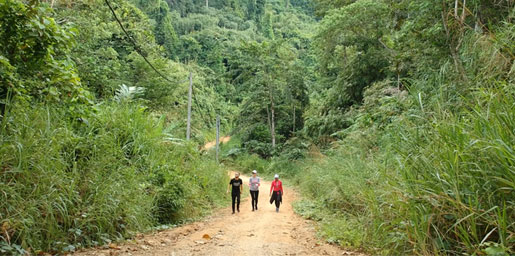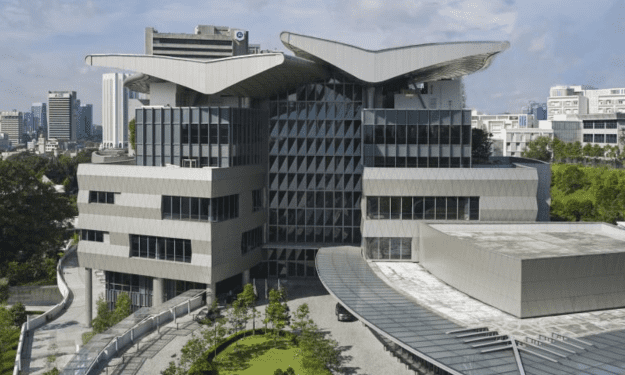WHEN THE FOUNDERS of the Asia School of Business met with business leaders in Kuala Lumpur to discuss how corporate partners could support the planned new business school, they faced great skepticism from one potential sponsor. “He said, ‘Do we really need another business school to turn out more overconfident, overpaid graduates?’” relates Loredana Padurean, associate dean and faculty director for action learning at ASB, which was established in 2015 by the Sloan School of Management at the Massachusetts Institute of Technology in Cambridge and Bank Negara Malaysia.
“He told us that it takes up to two years for an MBA graduate to truly create value in a company, and that in a global context, cultural adaptation and integration can be a long-term process. He said, ‘I’m not interested in supporting this program unless you find a way to narrow down the two-year gap.’” ASB’s founders took that criticism to heart. They focused on designing a curriculum that would create graduates who were transformative, principled, and market-ready—and to do that, they made action learning a central part of the MBA experience.
“To develop transformative leaders, we have to create a transformative experience, so every semester has to include an experience students haven’t had before,” says Padurean. “To create market-ready leaders, we have to expose students to those experiences as early as possible. To teach principles, we have to allow them to observe principled leaders in action.”
ASB launched a 20-month, five-semester MBA program in which students spend about a third of their time in action learning projects that are based all over the world. Projects are proposed by companies that range from local nonprofits to global brands. “Since the school opened two-and-a-half years ago, we’ve had 176 projects in 18 countries for 90 companies,” says Padurean. “By the end of the program, a graduate could have been on five different projects with five different companies in five different industries in five different countries.”
Putting together a plan
The ASB program is patterned after the Action Learning Labs run by founding partner MIT. The two schools maintain close ties: ASB founding president and dean Charles Fine was a faculty member at MIT Sloan for more than 30 years, and Sloan faculty teach numerous courses in Kuala Lumpur. In addition, all ASB resident faculty have MIT Sloan appointments as International Faculty Fellows, and ASB students spend one month each year taking courses on the MIT campus in Cambridge. ASB’s version of action learning is explicitly envisioned as a four-part process in which students “see, plan, act, and reflect” over multiple visits and in reflective time afterward.
Each semester begins with students spending a few weeks in the classroom participating in discipline-specific modules such as accounting or organizational behavior. In the action learning course, Padurean teaches them a variety of soft skills—which she has termed “smart skills”—such as communication, team management, and conflict resolution. “This gives students a baseline for understanding how to manage projects, processes, and people,” she says. A few weeks in, they depart for the first of three on-site visits, each of which lasts one or two weeks.

ASB students and faculty hike in the rainforest of Belum. (Photo courtesy of the Asia School of Business)
By this point, students have been sorted into four-person project teams. The MBA classes at ASB so far have averaged about 40 students, but even with such a relatively small group, creating the teams is a complex process. At the beginning of each semester, students receive a list of the available projects, and they are given points they can use to bid on the ones they want. The school tries to create teams based on student preferences, particularly if a student is already planning to follow a specific career path, but other factors are also in play.
“Diversity is equally important,” Padurean explains. “We might want a team to have an engineer, a marketing student, a data processor, and someone who has quantitative skills, and we want a balance of men and women. It’s also good if each team can include someone who’s from the country where the project will take place, but that’s not always necessary.” To make sure all these criteria are met, many administrators are in the room while the matching is done. “We have the action learning staff, the career development staff, and the MBA office,” says Padurean. “And in the first semester, because we don’t know the students that well yet, we bring in the admissions team. We take data points from as many angles as possible.”

ASB students get ready to work at Carsem, a semiconductor packaging factory in Malaysia. (Photo courtesy of the Asia School of Business)
After teams are created, each one is also assigned both a business coach, who is usually a senior business executive, and a faculty advisor. At that point, the students are ready to make their first visits on-site.
Presenting and assessing
On those initial trips, students focus on refining the project scope, defining methodology, determining the data they need, building relationships with stakeholders, and coming up with an action plan. They return to campus for more coursework, but then they’re back in the field a few weeks later to collect and process data and begin the problem-solving process. Their third on-site visit comes toward the end of the semester, and that’s when they implement solutions.
Every time students return from their on-site visits, they present their findings and their proposed actions to a panel of faculty and business coaches, and these presentations are part of their final grades. “We grade presentations because we can’t fix problems at the end,” says Padurean. “We have to address them early on.” Once students return from their final visits, they have about four days to prepare for the Action Learning Symposium, where they present their findings to students, faculty, and corporate sponsors. Students who are working on projects that involve proprietary information make private presentations.
Students also spend significant time boiling their projects down to posters that are displayed at the symposium. Student grades are based on their presentations, end-of-semester reflection papers, anonymous peer reviews from team members, and feedback from executives at host companies. While the action learning takes place as part of its own course, it is deeply integrated with the theoretical subjects being taught in other classes. Padurean describes ASB’s approach to action learning as the horizontal line that crosses the program, while the discipline-based modules are the vertical lines that intersect it.
More practically, if she realizes that students in her course need knowledge in a specific discipline, she can ask the faculty member teaching that subject to come in and give a quick tutorial. At the same time, other professors can draw on the students’ real-world experiences to illustrate the theoretical concepts they’re teaching in class. Says Padurean, “They have so many examples coming from the action learning projects that they can always anchor what they’re teaching in what the students are doing.”
Lining up projects
To accommodate four-person teams for the school’s current population, Padurean and her staff must arrange between ten and 12 company projects per class, for a total of about 25 per semester. They look for projects that are complex enough to challenge MBA students but not so complicated they can’t be completed in a few months. Currently, corporate partners are not charged fees to participate, but they cover the cost of students’ expenses while they’re on-site.
Even though technically Padurean is supported by only two directors of action learning who help source project sponsors, “pretty much everyone at ASB is part of a sales team,” she says. If anyone at the school meets with a potential sponsor for any reason, the topic of action learning comes up. “It doesn’t matter if you’re the president, the dean, the secretary. You go, you sell.” This intense focus on finding partners has resulted in a wide range of projects. One, for instance, was proposed by a large local nonprofit that wanted students to develop a sustainable economic development plan for a community of indigenous people who live in the Malaysian rainforest.
“When you’re knocking on the doors of the poorest people in the world, you get a reality check.”—Loredana Padurean, Asia School Of Business
To reach one of the villages of the reclusive community, students embarked on a five-hour drive, a one-hour boat ride, and an hourlong hike. “The villagers have their own generators, so they have electricity, but they have no phones, TVs, radios, or internet,” says Padurean. “They had never had Westerners or foreigners in their community before, and none of the students spoke their language.”
The student team consisted of a Kenyan, an American, an Indian, and a Malaysian. They ultimately proposed that the community launch an ecotourism package that would allow them to host visitors a couple of times a month. Over the weeks of the on-site visits, the students and the villagers grew close. “They ate from the same bowls and washed their dishes in the same river. It was transformative for both parties,” says Padurean, who accompanied them on one visit. “The villagers were crying when the students left.”

ASB faculty receive gifts from the people of Orang Asli, Malaysia. (Photo courtesy of the Asia School of Business)
At the other end of the spectrum was a project for a multinational company that was trying to develop a market penetration strategy for Southeast Asia, but found that it wasn’t getting the same results in Myanmar that it had seen in Thailand. “Company officials didn’t seem to think that different countries in the region had different market profiles,” Padurean observes. Students on this project headed to Myanmar to do on-the-ground market research, visiting households to find out what products people were using, how they perceived the brand, and what they were willing to pay for similar items.
Such experiences keep students from becoming the overconfident MBA graduates described by that early corporate sponsor. “What deters someone from becoming arrogant are constant reality checks,” says Padurean. “When you’re visiting indigenous people in the jungle or knocking on the doors of the poorest people in the world, you get a reality check.”
Growing the program
While the current action learning model works well now, Padurean knows a big challenge is on the horizon when the school scales up. Currently, ASB is constrained by capacity, as classes are held in Bank Negara’s center of excellence in knowledge and learning. But the school is nearing completion on its new campus, which will have a capacity of 700 students, including about 75 in the MBA class. When the new facility opens, the school will offer executive education, specialized master’s degree programs, and a part-time MBA, in addition to the full-time MBA program.
Padurean hopes the MBA program will be established well enough by that time that she won’t have difficulty finding project sponsors, many of whom will be repeating hosts. She expects the real challenge to be hiring staff and faculty who are enthusiastic about the time and energy they must invest in the action learning cycle. Her action learning directors go on-site every time the students do, and faculty and coaches also make on-site visits every semester.
The key to easing the burden on the staff will be to make the action learning program more automated and process-driven. “Once we have more experience, we’ll have a better idea of how to deal with students, hosts, and partners,” Padurean points out. And the key to lining up the right faculty, she adds, will be “hiring recent PhDs who are excited about this intense applied learning model and who like having access to industry.” As the school grows bigger, Padurean foresees more adjustments and opportunities, such as the possibility of collaborating with other universities.
She knows that ASB’s unique format will make such partnerships difficult, but she’s not daunted about the changes and challenges ahead. “You know that expression, if it’s not broke, don’t fix it?” she jokes. “One of my directors says, ‘Loredana doesn’t know that expression.’ I say, if it’s not broke, let’s make it better. To be honest, I think that’s the baseline for innovation.”
Please send questions, comments, or letters to the editor to bized.editors@aacsb.edu.
This article was originally published on BizEd AACSB International website.





